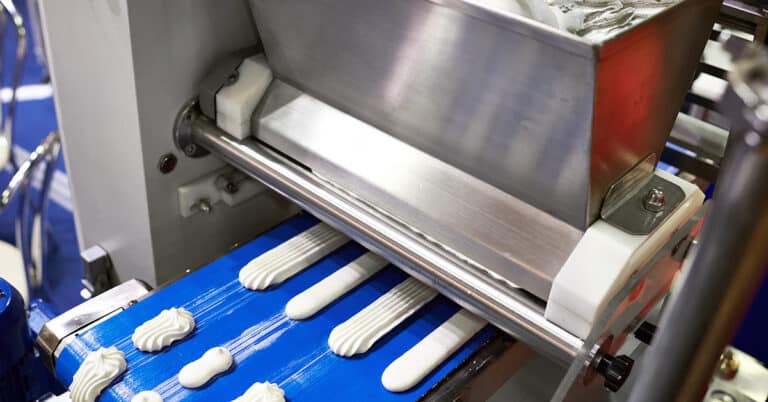As we gain the perspective to identify takeaways from the early stages of the COVID-19 pandemic, there is one factor that looms large across the industrial sector — agility. Agility plays a big role in numerous aspects of manufacturing and industry 4.0, and we will take a closer look at those aspects shortly.
That said, let’s point out one common theme throughout the COVID crisis to date. Companies that are equipped for agility have been able to pivot as needed and weather the storm of the pandemic. Less-agile companies, alternatively, have been forced to shut down or reduce capacity while awaiting a return to “normal.” How can we define agility in this context? A broad definition might be the ability to quickly adapt and adjust operations and processes to meet the requirements of new challenges.
Examples of agility include:
- Supply chain agility – allowing a business to continue sourcing components and materials, even in the face of global transit and shipping disruptions.
- Process agility – allowing a business to apply existing processes for different uses. An example of this might be manufacturers using machinery to produce components for critical medical equipment such as ventilators or masks, even if they have not previously engaged in these areas.
- Infrastructure and logistics agility – allowing a manufacturer to continue functioning in the face of operational challenges. An example of this might be having the tools in place to allow much of the workforce, as is feasible, to do their jobs remotely.
Industry 4.0 technologies are a major contributor to the ability to be agile. While manufacturers have been talking about and preparing for Industry 4.0 for years, the pandemic makes clear that now is the time to take action in terms of implementing Industry 4.0 tools, technology and practices that can enable your facility to be more agile. Before we discuss how to prepare for Industry 4.0, let’s take an overview of what Industry 4.0 manufacturing entails.
Industry 4.0 technologies
Industry 4.0 manufacturing is based on a few themes, technologies and processes. These include:
- Sensors and data collection: Data is the backbone of Industry 4.0. The data required to be Industry 4.0-ready is collected through sensors. These sensors may be integrated as part of newer equipment, or installed as aftermarket additions for older equipment and infrastructure.
- Communication and connectivity: A key requirement of data sensors is that they are able to record in real-time and communicate data to a central repository and data analysis method. This connectivity is part of the “smart factory” or “smart machinery” that you are probably aware of. More advanced Industry 4.0 practices also entail smart machines and sensors that communicate directly with each other.
- Analysis and implementation: Data is only as useful as what we can learn from analysis, and is only as effective as the actions, processes and implementations that occur based on that analysis. All too often, analysis is the missing component of an Industry 4.0-ready facility, meaning that much of the potential of the investment is lost.
Operational areas where Industry 4.0 can make an impact and improve agility include:
- Industrial maintenance: Industry 4.0 sensors provide advanced insight into machinery performance — detecting aberrations in vibration, heat, noise and other areas. With enough data on hand, this can indicate the underpinnings of a potential problem. Early detection allows for more proactive maintenance and greater control over downtime.
- MRO asset management: Sensors and other industrial internet of things (IIoT) technology can also be used in asset and inventory management, providing benefits such as increased inventory accuracy, easier location of spares, greater insight into asset usage and reordering requirements, and more.
- Supply chain consistency: With improved insight into asset usage, criticality and inventory patterns, facilities can make more informed decisions about suppliers and ordering frequency.
- Distanced and remote work: With more connected equipment and sensors, some job functions will be able to operate effectively from off-site locations or other areas of the facility. This ability to troubleshoot, diagnose and control equipment remotely will be necessary for the new, post-COVID reality.
Industry 4.0: Are you ready?
In this section, we will look at some actionable steps for you to take when implementing Industry 4.0 technology, ensuring you and your team are best equipped to navigate the post-COVID industrial landscape:
- Implement sensors, even on older machinery: This doesn’t mean you need a new floor of “smart” equipment. Aftermarket sensors can be purchased and installed at a relatively low cost. Now that this technology is cheaper and readily available, there is no longer any reason to delay steps toward a connected Industry 4.0 facility.
- Invest in data analysis: A data scientist may be a new role for the facility. As illustrated earlier, however, effective data analysis is necessary to reap the benefits of Industry 4.0 hardware and will pay dividends in efficiency down the line.
- Work with “connected” suppliers and partners: The more connectivity and data present throughout your supply chain, the more predictable and reliable it will be. As you implement advances in your facility, you should also look to work with suppliers and partners that have taken the same steps. This can exponentially increase the efficacy of your Industry 4.0 supply chain practices.
- Be sure to buy in completely: Industry 4.0 technologies work best in concert with one another. One process gap or employee who prefers analog methods can create inconsistencies or even errors in your data and analysis, rendering it useless.
It is clear that Industry 4.0 in manufacturing is ready to provide you with more effective maintenance, increased productivity, less downtime and improved inventory practices. ATS’ comprehensive plant maintenance solutions incorporate IoT technology, as well as the right personnel to yield effective installation, analysis, implementation — and results. To learn more, visit our website or contact us today.






